Ayoob: Not a Fudd Holster After All

Some of today’s young shooters see a shoulder holster as a classically Fudd holster, an artifact from the past used only by old farts. Some see it as “derp,” an affectation indicating someone who has seen too many old movies and TV shows.
That’s understandable. Fictional private eyes in novels often wore them. The character Shell Scott was one: author Richard Prather armed him with a .38 Special snubby in a “clamshell” under his arm, apparently having seen a picture of a Berns-Martin shoulder holster which wasn’t a true clamshell. Mickey Spillane’s character Mike Hammer wore a 1911 .45 auto in one, which he called a “shoulder sling,” and Spillane himself was known to own and occasionally carry a .45 in a Bianchi shoulder holster.
Beyond fiction, there were real gunfighters and legendary lawmen who carried them. John Wesley Hardin was known to have designed a vest with holster pockets that was sort of “semi-shoulder” carry. Dr. John “Doc” Holliday did indeed occasionally carry in a shoulder holster, as correctly depicted in the movie Tombstone.
In the old TV series (and the movie) “The Untouchables”, Eliot Ness as portrayed by Robert Stack on television wore a shoulder holster. The real-life Ness, however, had in his rig a snubby revolver, not the larger duty revolver wore on the show nor the 1911 clone Kevin Costner drew from under his armpit in the movie of the same name. The real-life Melvin Purvis was known to most often carry a snubby revolver in a shoulder holster (and emptied it at Pretty Boy Floyd), though he also fired an unspecified semi-auto pistol and a Thompson submachine gun at bad guys on other occasions.
[Don’t miss veteran instructor Mike Boyle’s article on shoulder holsters.]
Frank Hamer, the legendary Texas Ranger, most often wore a Single Action Army .45 at his hip, but one day in Sweetwater, Texas was grateful that he was also wearing a big double-action revolver in a shoulder holster for backup. Ambushed and shot in the shoulder of his gun arm with a .45 auto, he used his non-dominant hand to twist the big .44 Special out from under his arm and kill his assailant instantly with a 246-gr. bullet to the heart.
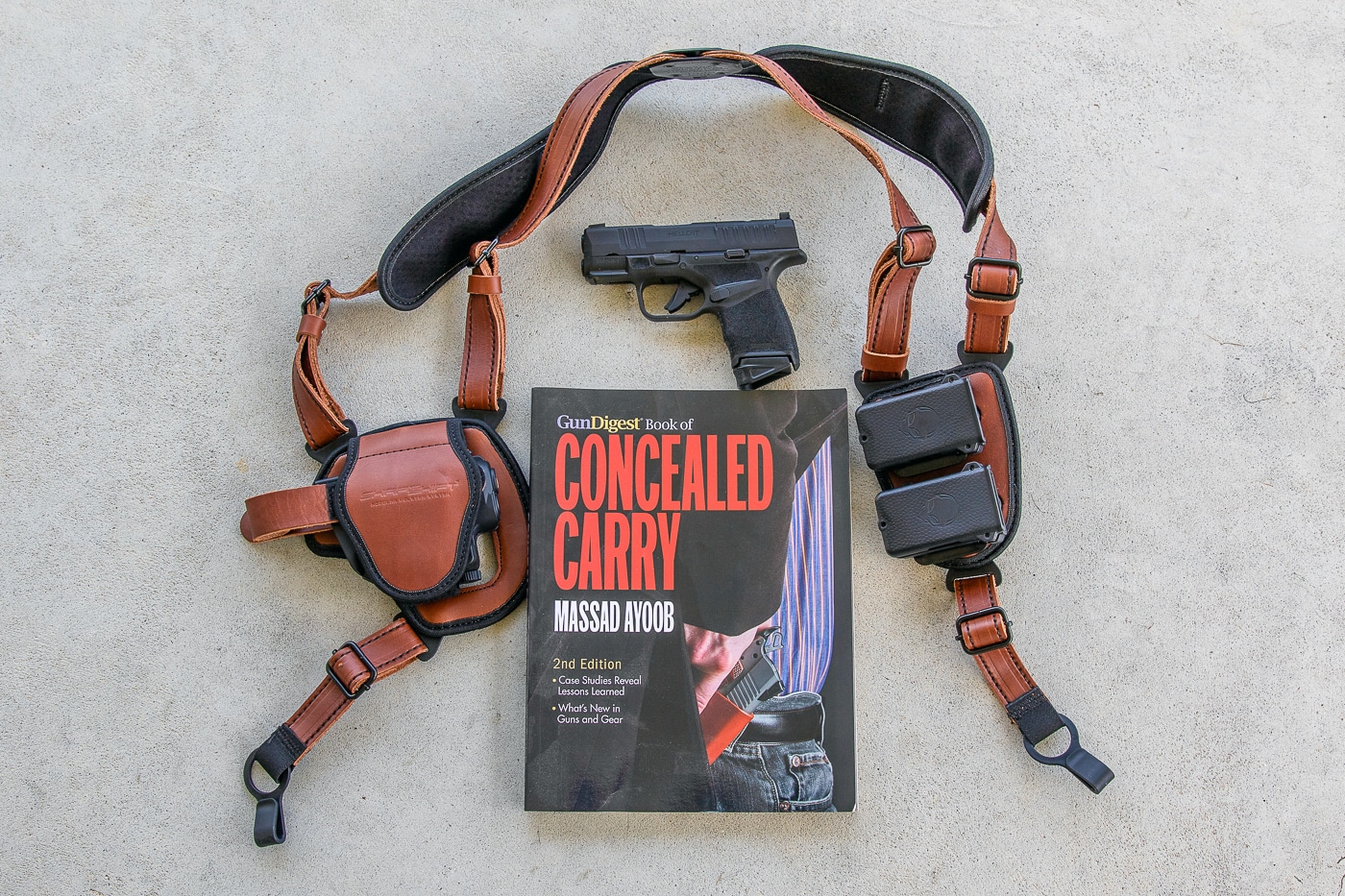
Later in the 20th century, there were other gunfighters who packed shoulder rigs, at least sometimes. The NYPD Stakeout Unit included legendary gun sharks like Jim Cirillo and his partner Bill Allard, the one man in the unit who killed more armed criminals in face-to-face gunfights than Jimmy.
For a magazine article in the early 1970s, I spent some time with the two of them on stakeout in New York City — participatory journalism at its most exciting. Cirillo didn’t seem to care for shoulder rigs, but Allard always did. In addition to their short barrel 12 gauge shotguns, Stakeout officers were required to wear two handguns.
[Be sure to read Massad Ayoob’s article on the skill of drawing from a shoulder holster.]
NYPD mandated blue steel.38 Specials at the time, and Jimmy had one on his dominant-side right hip and another cross-draw, backed up by a snubby in his pocket. Allard wore a .38 on his right hip and usually the National Match 1911 .45 auto he had special permission to carry in a shoulder holster under his left arm. He used it, too, on one occasion killing two armed robbers with a .45 Allard whipped out from his shoulder rig.
Shoulder Carry Today
Contrary to the belief of some shooters who “came in late,” I maintain that the shoulder holster has a place today in the holster wardrobe of the law-abiding carrier of concealed handguns.
Let’s look at some of the reasons why.
Orthopedic Holster
As I write this, I am wearing a full-size all-steel Springfield Armory Range Officer 1911 .45 in a holster older than many reading this, Bianchi’s classic X15. Why? I was diagnosed a while back with a serious case of spinal stenosis at L3 through L5, the area of the spine from whence the sciatic nerve emanates.
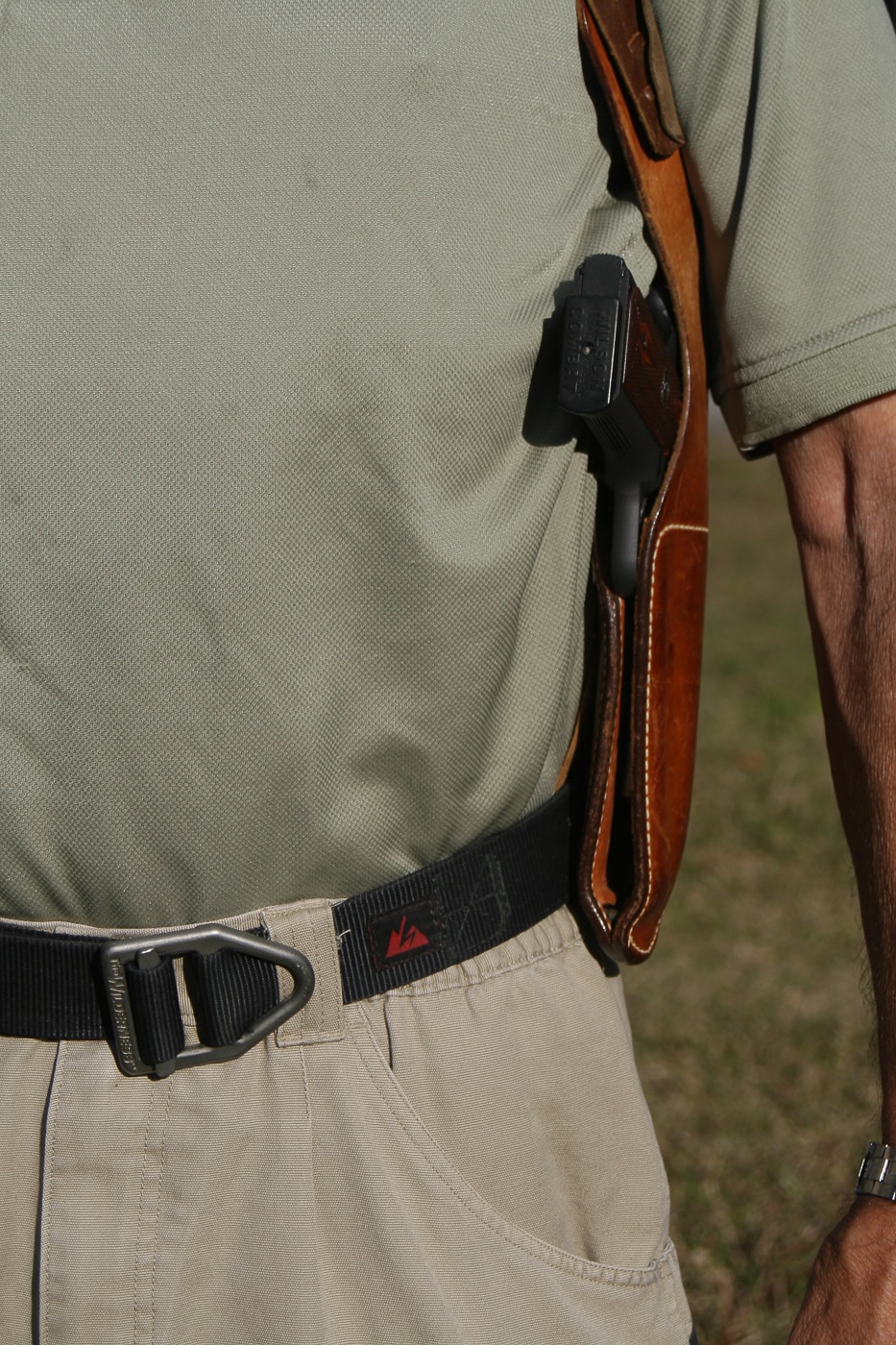
When the sciatica hits, as it has at the moment, carrying a serious-size handgun on my usually preferred strong side hip becomes distractingly uncomfortable. The under-the-arm carry lets the upper body take the weight and makes all-day wear of a powerful handgun much more practical.
Abdominal surgery? A shoulder rig let my friend and fellow instructor Steve Denney carry a full-size fighting handgun while recovering after same. Belt (let alone appendix) carry would have been excruciating.
Ambidextrous Access
Anyone who has studied armed self-defense realizes that when the fight for your life begins, your dominant arm may be taken out of the fight by a gunshot wound (remember Frank Hamer in Sweetwater?), or tied up fending off the attacker or pushing an innocent victim out of the line of fire.
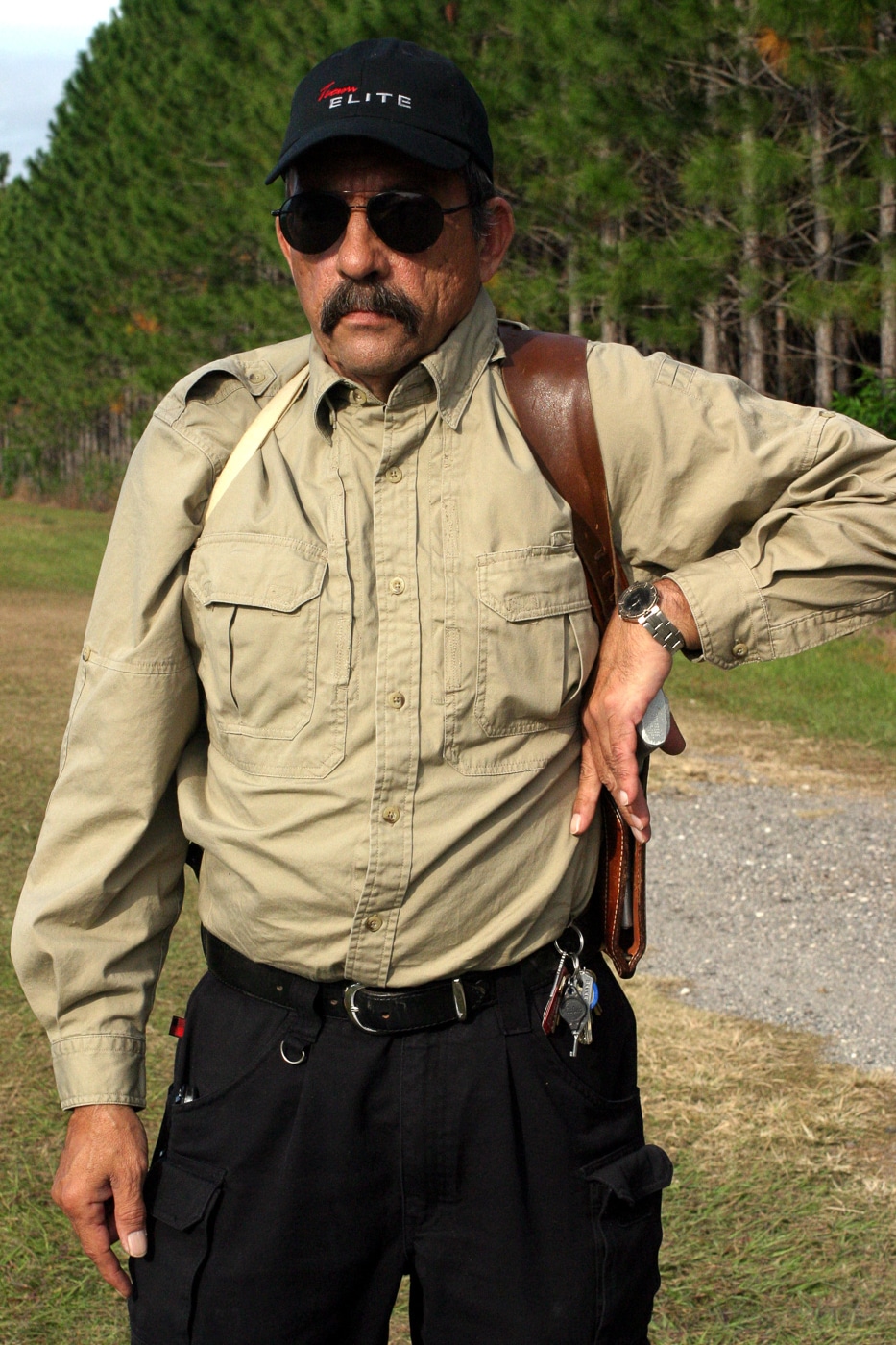
Your non-dominant hand can rather easily access the shoulder holster right there under the armpit on that hand’s side: knuckles toward the ribcage, thumb to the rear. As you draw, keep the muzzle down until it is past your own body, then turn the wrist to bring it to bear on the threat.
Seated Self Defense
If a deadly threat strikes when you are seat-belted inside an automobile, or in a chair behind your desk when an assault suddenly erupts, ergonomics are such that the shoulder holster may very well be faster to reach than something on your hip and certainly faster than getting to a gun in a desk drawer or a vehicle’s console.
Note that the single job description of cops still carrying their handguns in shoulder holsters on duty is police helicopter pilots, who tend to be strapped into their seats tighter than anyone else. There are sound reasons for this.
Bad Weather Factor
The first time I had to draw a gun on anyone in public was a bitterly cold winter night in a remote parking lot in northern New England when I was 21. It was a city that US News and World Report listed as one of the 10 safest in the nation, and I got jumped by two muggers who apparently didn’t read that magazine.
What saved me was that I had seen them coming and unbuttoned my overcoat and the suit coat underneath. When they came at me, I had time to draw my .38 snubby from its Bucheimer hip holster, take them at gunpoint, and back them off. No blood was shed on either side.
Thereafter for a very long time, until I figured out how to do a hip draw from under a closed-front heavy garment, I carried either cross-draw in that kind of weather or … with a shoulder holster. As a hunter who sometimes hunted with a large-caliber revolver, I had learned in the winter deer seasons that reaching through the unfastened upper part of a closed-front heavy garment could be fast and sure.
Why over the years have so many handgun hunters gone to shoulder rigs, particularly in inclement weather? (1) The garment protects the gun from snow and rain. (2) As noted above, it’s more quickly accessible than a garment-covered belt holster. (3) If you slip and fall in snow or mud or whatever, the gun is better protected.
Surreptitious Draw
The fastest draw is always to have the gun already drawn, obviously. The second fastest is to have the hand on the gun before you begin to present it. It’s pretty hard to do that with a hip holster or even an appendix holster without obviously giving your preparedness away and perhaps frightening innocent bystanders.
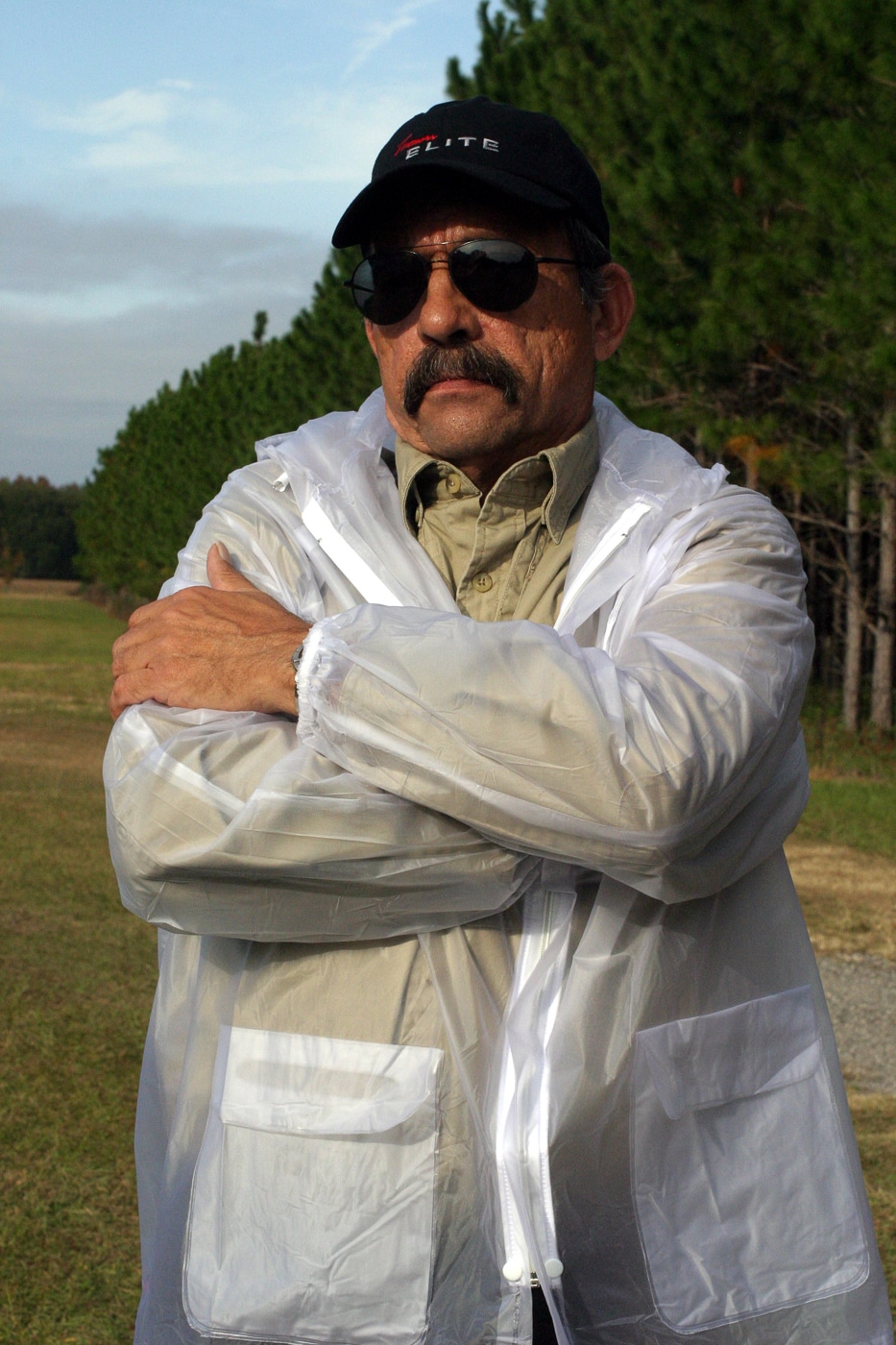
However, just folding your arms allows you to have hand on gun without revealing your readiness if you’re carrying in a shoulder holster.
Don What You Need Right Now
Shoulder holsters go back to at least the 19th century if not before, but it was not until the 1960s that Richard Gallagher created his Jackass Shoulder System, the holster which founded the gunleather empire now known as Galco, and since widely copied.
The holstered handgun hangs on one side of the harness, and on the other, a double magazine (or speedloader) pouch, and even a handcuff case. You can attach a small clip-on flashlight or Spyderco or equivalent knife as well. This allows you, in the same time it takes to put on a jacket or shirt, to throw on “all you need” to suddenly deal with danger. The sort of detectives who thought their best holster was their desk drawer loved it … and it makes enormous sense for something at bedside for armed citizens’ home defense (if secured properly and safely, of course).
Downsides
TANSTAAFL: There Ain’t No Such Thing As A Free Lunch. Everything has its downsides and costs, including shoulder holster carry.
You’ll need a cover garment. There are Spandex-type tee shirts with gun pockets that allow you to comfortably carry a small, light pistol under just a tucked-in shirt. Other than that, under-the-armpit carry requires some sort of cover garment that may be seen as obviously out of place and, in some high-temperature situations, might be downright uncomfortable. (Don’t trust a vest to hide a shoulder harness; it will show through the armpit holes.)
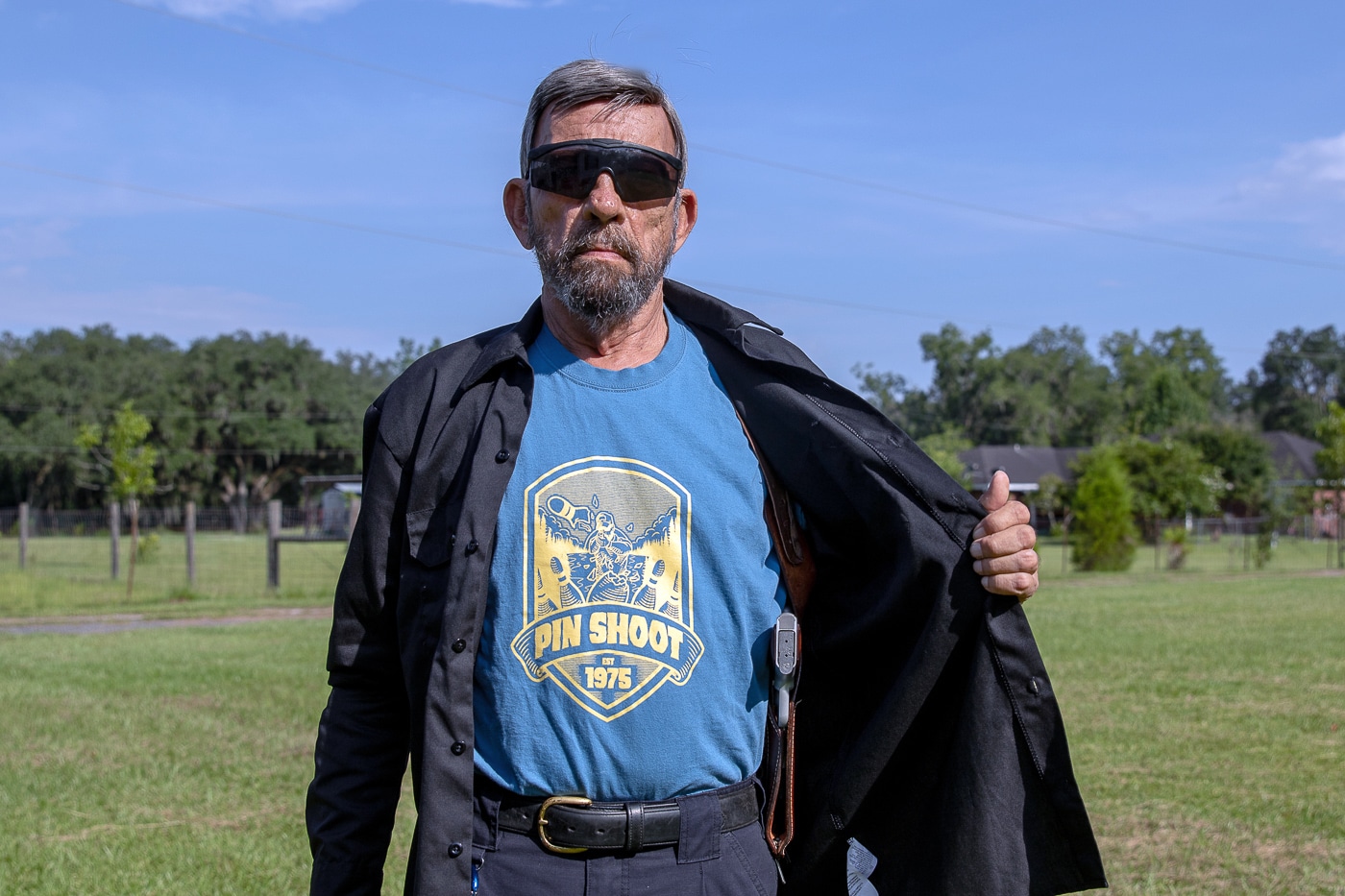
It may take a while to adapt. Unless you backpack a lot, wearing weight on your shoulders will take some getting used to.
From a hands-off start, “shoulder” ain’t the fastest. I knew the late, great Jeff Cooper. In the late 1950s and early 1960s, he was a champion of the Hardy-Cooper shoulder holster and kicked butt with it … but as time went on, he switched to strong-side hip carry.
I also knew another late, great champion, Tom Campbell. In the mid-1970s he became famous for his speed from the chest holster (somewhat similar to shoulder rigs) when competitions often started with hands clasped in front of the torso. However, when “hands at the sides” became more common, he went to “just forward of the gun hand side hip” carry.
Perspectives
The shoulder holster is not this writer’s favorite. It is not the be-all/end-all of concealed carry. But, it does have a place in your wardrobe of concealed carry self-defense options. Try it and practice with it and see for yourself.
Editor’s Note: Please be sure to check out The Armory Life Forum, where you can comment about our daily articles, as well as just talk guns and gear. Click the “Go To Forum Thread” link below to jump in and discuss this article and much more!
Join the Discussion
Read the full article here









